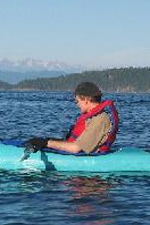
I am interested in making robots act purposefully and successfully in a world in which most everything is uncertain. Sensors are noisy, actions are imprecise, and objects are often in the wrong location. Despite such obstacles to purposeful action, there are many tasks that can be accomplished successfully. Humans, animals, and some machines are proof. Providing robots with the ability to operate autonomously and purposefully requires an understanding of how different tasks may be accomplished by different repertoires of actions.
Since about 2002, I have been applying methods from topology to these and related problems. My interest in topology started with the realization that knot invariants could describe the 3D arrangement of protein structures. Subsequently, DARPA launched a big program connecting robotics with topology. That program gave me an opportunity to seek topological parallels to some of the earlier work I had done on planning in the presence of uncertainty. One novel result was the following controllability theorem: A system can reach any state in a graph with control uncertainty if and only if the graph’s strategy complex is homotopic to a sphere of dimension two less than the number of states in the graph.
Recently, I have explored topological perspectives on privacy. One discovery is that homology in relations provides lower bounds on how long an individual can defer de-anonymization. In conjunction with my previous work on strategy complexes, this result shows the manner in which a fully controllable system can obfuscate its strategies and goals.